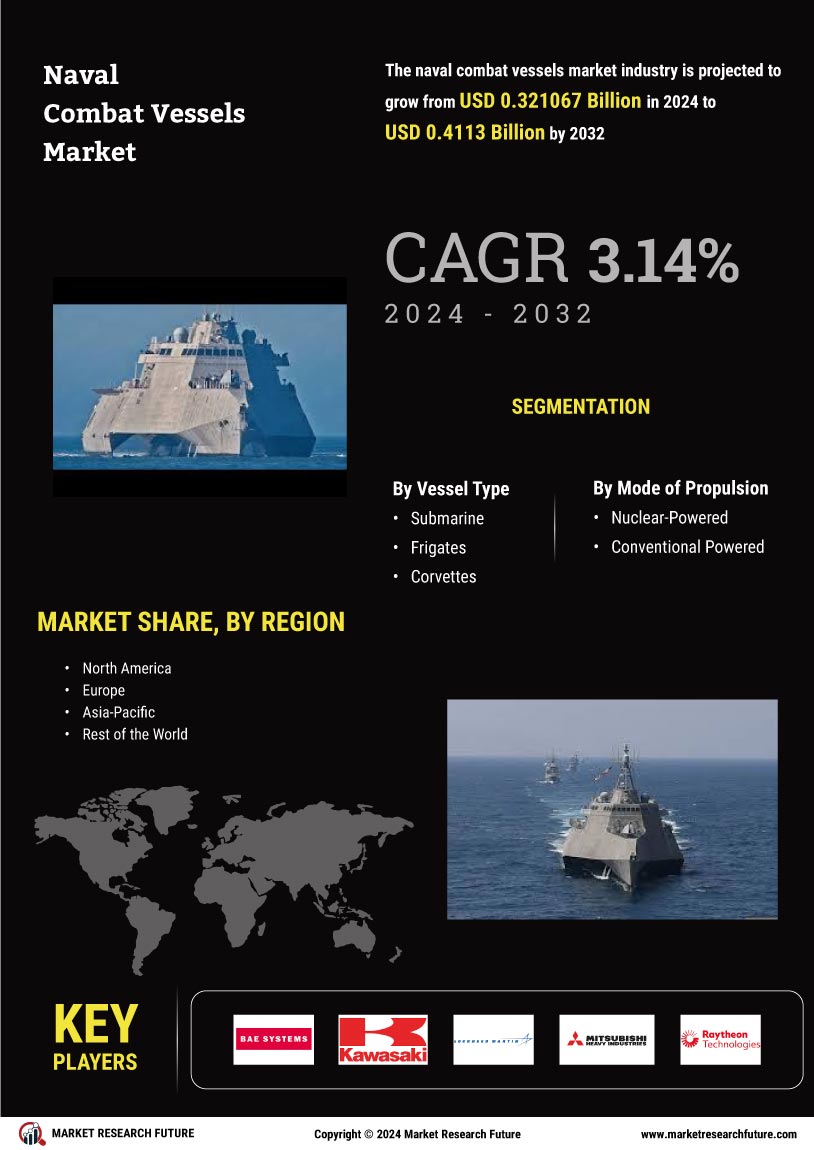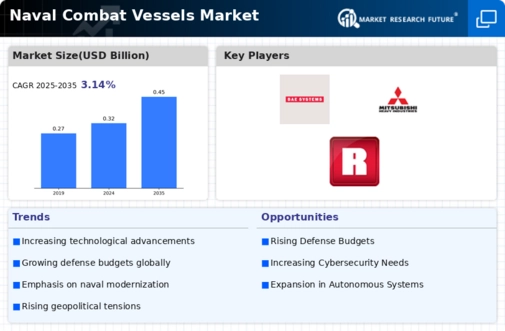Leading market players are investing heavily in research and development in order to expand their product lines, which will help the naval combat vessels market grow even more. Market participants are also undertaking a variety of strategic activities to expand their footprint, with important market developments including new product launches, contractual agreements, mergers and acquisitions, higher investments, and collaboration with other organizations. To expand and survive in a more competitive and rising market climate, the naval combat vessels industry must offer cost-effective items.
Manufacturing locally to minimize operational costs is one of the key business tactics used by manufacturers in the naval combat vessels industry to benefit clients and increase the market sector. In recent years, the naval combat vessels industry has offered some of the most significant advantages to the market. Major players in the naval combat vessels market attempting to increase market demand by investing in research and development operations include BAE Systems (U.K), Kawasaki Shipbuilding Corporation (Japan), Lockheed Martin Corporation (U.S.), Mitsubishi Heavy Industries Ltd. (Japan) and Raytheon (U.S.).
The company Mitsubishi Heavy Industries Ltd. (MHI) producesvarious heavy equipment. Power plants, chemical plants, environmental equipment, steel constructions, commercial and general machinery, shipbuilding, aviation, space systems, and air-conditioning systems are only a few of the company's goods and services. In the areas of energy, including nuclear, thermal, and renewable energy, and the environment, including chemical plants, MHI offers solutions for social infrastructure. The business additionally offers cutting-edge transportation services and technologies for use on land, at sea, and in the air.
In November 2021, the second MRRV for the Philippine Coast Guard was launched by Mitsubishi Shipbuilding today during a ceremony at the Shimonoseki shipyard. The vessel will be used for offshore and coastal patrolling, extreme weather rescue missions, and boosting quick response capabilities for maritime accidents and criminality.
A leader in worldwide security, Lockheed Martin Corporation focuses on developing, manufacturing, and integrating high-tech goods and services. The company's operations include aerospace, telecommunications, electronics, information and services, energy, and systems integration. The operations of Lockheed Martin. In August 2018, the U.S. Navy received the Littoral Combat Ship (LCS) 11 and the future USS Wichita, LCS 13, from Lockheed Martin Corporation and Fincantieri Marinette Marine. The future USS Wichita, LCS 11, is the sixth Freedom-variant LCS, and LCS 13 is the seventh. Both were developed and constructed by the Lockheed Martin Corporation.















Leave a Comment